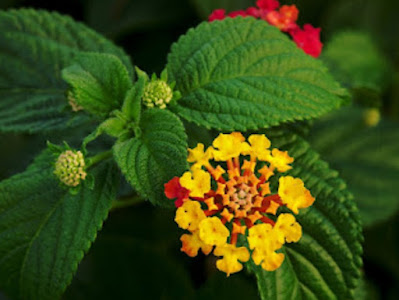Acid-fast bacillus activity of Lantana camala, a plant traditionally used to treat symptoms of tuberculosis.
Tuberculosis remains a catastrophic public health problem. Many Ugandan communities use medicinal plants to treat various ailments, including respiratory ailments. There are allegations that some people are able to cure tuberculosis. Confirmation of some of these claims may lead to the discovery of lead compounds for the development of drugs to treat tuberculosis.
Plants are an effective source of chemotherapeutic agents for a wide range of infectious diseases, and there is a growing interest in the development of extracellular agents. Many communities in East Africa in general, especially in Uganda, tend to use plants to treat various ailments, including respiratory ailments. There are allegations that some people are able to cure tuberculosis. Lantana camala is one of the plants known to cure tuberculosis and is widespread in the southwestern part of Uganda. L. camara is a shrub of the Verbenaceae family. It reportedly originated in tropical America, but is now found in many African countries, including the arid regions, and after being introduced as an ornamental plant nearly 300 years ago, in Kenya, Uganda, it spread to Tanzania.
It is very aggressive and now takes over most of the plants where it was introduced. Its growth poses a threat to other biodiversity. The combination is split L leaf extraction. Camara is reported to have antimicrobial, fungicidal, insecticidal and nematicidal activity.
There are also reports that isolated lantana compounds extracted can be used as herbicides and have been tested in water hyacinth for some success. It has also been reported that verbacoside, a compound extracted from extracted lantana has been shown to have antimicrobial properties. immunosuppressive and anti tumor activities. The use of lantana oil in the treatment of itchy skin and as an antiseptic for wounds with and without leprosy and scabies is reported.
The use of lantana in traditional medicine to treat cancer, chicken pox, measles, asthma, ulcers, inflammation, eczema, tumors, high blood pressure, bilious fever, catarrhal diseases, tetanus, tetanus, rheumatism, malaria and atoxy gastric viscera, are also reported. In this study we investigated the antimycobacterial activity of leaf components from L. camara
Plants have become a source of effective medicine for various ailments. Globally, there is a growing interest in the development of drugs of plant origin. Lantana Kamala (Verbenaceae)
Best known as Lantana is one of the plants known for its high therapeutic effect.
This is a straight or indirect living shrub that can reach a height of 23 feet [23 m] and form dense undergrowth. The leaves are light, oval or oval, facing the stem. The leaves are green, rough, have fine hair, have curved edges and give off a pleasant aroma when crushed. The flowers are clusters of many small tubular flowers. These clusters of flowers grow on stems and come in a variety of colors (white, cream, yellow, orange, red, pink, purple) and usually consist of three different colored flower rings. When fully ripe, the fruit becomes fleshy, oval, purple or black and can be up to 5 mm long. The bark of the lantana stem is softened and used as an ingredient in leprosy and other skin rashes. Boil freshly harvested leaves and place them on top to relieve inflammation.
leaves fragrant, mint flavored, naturally cool, anti-inflammatory (can reduce inflammation), antipyretic, sweating, antipyretic, acute pectoralis, stimulants, tonics, and wounds. There is healing. The extraction of leaves and flower petals is used to treat fever, constipation, tuberculosis and bronchitis. In addition, the leaves are also used to treat
1. rheumatism
2. cuts
3. Ulcers
4. catarrhal
5. Infection
6. tetanus
7. malaria,
8. Cancer,
9. asthma,
10. inflammation,
11. Tumor,
12. Cold and up blood
13. pressure.
Combined with the leaves of Cymbopogon citratus, the leaves are used as an herbal remedy to treat colds, high blood pressure and malaria. Outside, the leaves and stems are used for bathing to treat dermatitis, eczema, pruritus, measles and chicken pox. They are used as a poultice in the treatment of sprains, wounds and contusions. They are used as irrigation to treat uterine diseases.


Post a Comment